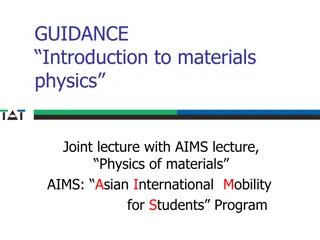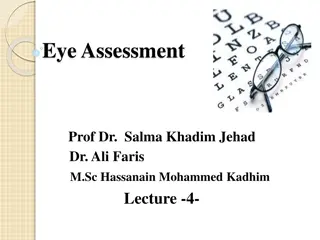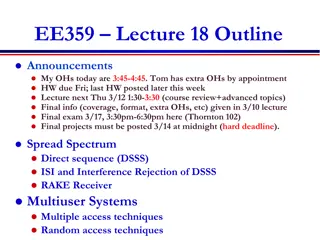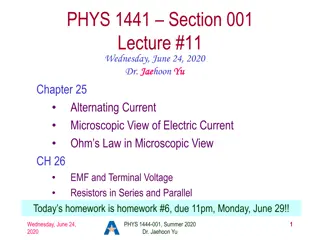Lecture 2a
Understanding the process of standardization, examples of acid-base titrations, and the significance of titration in determining pKa values for an unknown amino acid solution. Learn how to identify equivalence points and calculate concentrations accurately through titration curves.
Download Presentation

Please find below an Image/Link to download the presentation.
The content on the website is provided AS IS for your information and personal use only. It may not be sold, licensed, or shared on other websites without obtaining consent from the author.If you encounter any issues during the download, it is possible that the publisher has removed the file from their server.
You are allowed to download the files provided on this website for personal or commercial use, subject to the condition that they are used lawfully. All files are the property of their respective owners.
The content on the website is provided AS IS for your information and personal use only. It may not be sold, licensed, or shared on other websites without obtaining consent from the author.
E N D
Presentation Transcript
Lecture 2a Determination of the Concentration and the Acid Dissociation Constants of an Unknown Amino Acid (Part II)
Standardization I Why is a standardization needed? In order to determine the exact concentration of the amino acid solution, we need to know the exact concentration of the NaOH (in this lab it has been determined by lab support already). Requirements for primary standards: High purity Stability (low reactivity) Low hygroscopicity High equivalent weight Non-toxicity Ready and cheap availability
Standardization II Examples for Acid-Base titrations: Bases: KHP (potassium hydrogen phthalate, C6H4(COOK)(COOH), pKa= 5.40, MM=204.22 g/mol) C6H4(COOK)(COOH) + OH- C6H4(COOK)(COO-) + H2O Acids: TRIS (2-amino-2-hydroxymethyl-propane-1,3-diol, (HOCH2)3CNH2, pKa= 8.07, MM=121.14 g/mol), sodium carbonate (Na2CO3, pKa=6.37, 10.32, MM=105.99 g/mol) (HOCH2)3CNH2+ H+ (HOCH2)3CNH3+
Standardization III Other Standards (redox titrations): Potassium bromate: sodium thiosulfate solution Sodium chloride: silver nitrate solution Zinc powder: EDTA solution Sodium oxalate: potassium permanganate solution Potassium dichromate: ammonium ferrous sulfate solution
Titration I Why will the titration of the unknown amino acid solution with NaOH will show two equivalence points? Due to the addition of another acid, which is necessary to stabilize the amino acid solutions, the pH-value of the unknown solution is relatively low (pH~2.3). The unknown solution contains two forms of amino acid, namely H2A+and HA. There are a total of two protons that the OH-can remove to form HA and A-. The two equivalence point volumes are found from the titrations with the known NaOH solution. The volume between the two equivalence points gives the volume of NaOH required to remove one H+completely. Concentration of Unknown Amino Acid = (moles of OH- need to titrate from HA to A- ) / Volume of the unknown sample
Titration II To determine pKa1 and pKa2, locate the volume on the graphs half way between the two equivalence point volumes (shown as dark blue lines below: Veq1=15 mL, Veq2=30 mL) determined from the expanded derivative curves. The pH-value at this point is in the titration is equal to pKa2 (shown as dark red line, pKa=7.6 at V=22.5 mL). Next, measure an equal distance on the graph to the left of Veq1. The pH-value at this point is equal to pKa1 (dark green line, pKa=3.5 at V=7.5 mL). Titration curve 12 11 10 9 8 pH-value 7 6 5 4 3 2 0 5 10 15 20 25 30 35 40 45 50 Volume of NaOH added in mL
Post-lab Report In the post-lab for experiment 8, the following graphs are required: Expanded derivative graph for EACH TRIAL of NaOH/amino acid titration Expanded titration graph for EACH TRIAL of NaOH/amino acid titration ONE FULL titration graph for the determination of pKa-values (see page 93). The post lab report for this project is an individual report and is due on April 12, 2016 or April 13, 2016 depending on when your section meets.























